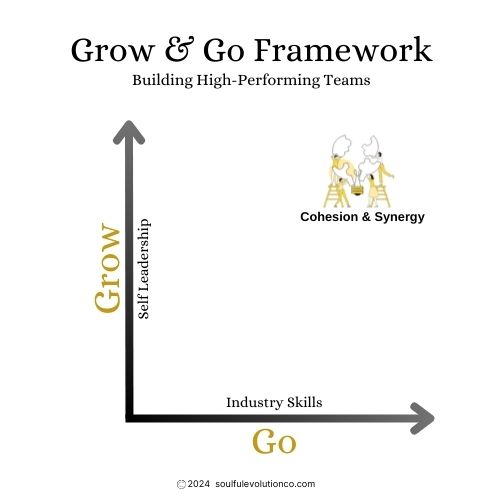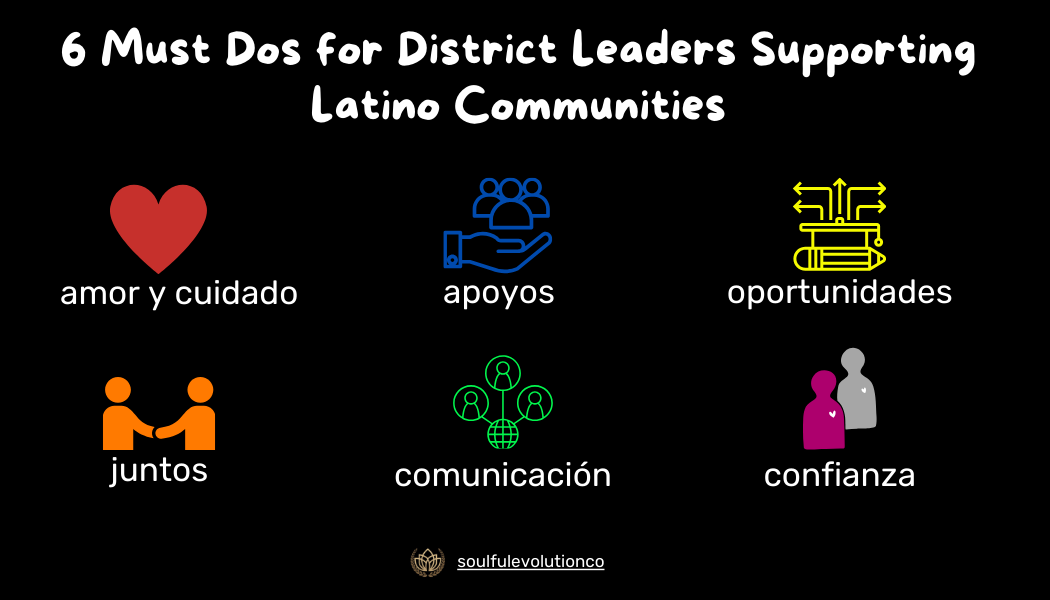In today’s fast-evolving professional landscape, building teams that not only perform but thrive requires an intentional focus on the intersection of personal growth and industry skills. The “Grow and Go” framework offers a dynamic lens to examine and enhance the cohesion and synergy necessary for high-performing teams (HPTs).
The Core of Cohesion and Synergy
Cohesion is the glue that binds team members together, fostering trust, shared purpose, and collaborative effort. Synergy, on the other hand, is the multiplier effect achieved when team members combine their diverse skills and strengths to create outcomes greater than the sum of their individual contributions. Together, cohesion and synergy elevate a team’s ability to tackle challenges, innovate, and achieve impactful results.
As Harvard Business Review states, “High-performing teams exhibit high levels of trust, communication, and shared purpose,” while reflective practices enhance decision-making and problem-solving.
Bridging Self-Development and Professional Growth
The “Grow and Go” framework emphasizes developing both the individual (the “self”) and the professional skills necessary to thrive in complex environments. This dual focus ensures that team members are not only technically competent but also emotionally intelligent and self-aware.
Self Leadership (“Grow”)
The “grow” aspect focuses on cultivating the “be” or self skills—qualities that define a person’s character and interpersonal effectiveness. These include:
- Self-awareness: Understanding one’s values, beliefs, and emotional patterns.
- Mindset and attitude: Maintaining a positive and adaptive outlook.
- Interpersonal awareness: Recognizing and respecting the emotions and perspectives of others.
Neck (2014) underscores the importance of fitness—not only physical but also mental and emotional—in shaping effective leaders. Developing these attributes creates a foundation of personal credibility and trustworthiness essential for cohesive teams.
Industry Skills (“Go”)
The “go” aspect highlights the “do” or industry skills—technical expertise, task execution, and problem-solving capabilities that drive results. These include:
- Task proficiency: Mastery of tools and techniques required for the job.
- Collaborative ability: Working effectively within a team to achieve goals.
- Strategic thinking: Planning and adapting to achieve long-term objectives.
By integrating these professional skills with personal development, the framework aligns individual growth with team and organizational success.
Aligning Vision, Purpose, Core Values, Culture, and Communication
Creating high-performing teams requires alignment across key dimensions: vision, purpose, core values, culture, and communication. Simon Sinek’s “Start With Why” emphasizes the importance of a clear purpose as a unifying force. Teams thrive when members understand the “why” behind their work, aligning personal motivations with organizational goals.
Brené Brown’s research on vulnerability and trust highlights the role of authentic communication in building strong team cultures. Open, honest dialogue fosters psychological safety, enabling team members to contribute their best without fear. Similarly, Adam Grant’s work underscores the value of a shared culture that prioritizes both individual growth and collective success.
Diverging Perceptions of Leadership Strengths
Teams often diverge in their perceptions of their collective leadership strengths compared to how they view the leadership strengths of high-performing teams. While members may recognize their own abilities in specific areas, such as technical expertise or task efficiency, they often idealize high-performing teams as having unparalleled cohesion, strategic foresight, and adaptability. This gap can sometimes hinder self-assessment and growth, as teams may undervalue the unique contributions they already bring to the table. Bridging this perception gap through reflective practices and constructive feedback helps teams identify and build upon their existing strengths, aligning them more closely with the characteristics of high-performing teams.
Implementing the Grow and Go Framework
Building cohesive and synergistic teams requires actionable steps:
- Team Assessments: Conduct regular evaluations to identify strengths, gaps, and opportunities for growth, leveraging both internal and external feedback.
- Shared Vision and Goals: Align team efforts around a clear, shared purpose to unify direction and motivation.
- Role Clarity: Define roles and responsibilities to ensure everyone understands their contribution to the team’s success.
- Reflective Practices: Create space for team members to reflect on their experiences and learn from successes and setbacks.
- Continuous Learning: Offer opportunities for professional development and personal growth to keep team members engaged and adaptable.
Outcomes of High-Performing Teams
When cohesion and synergy are prioritized, teams achieve:
- Enhanced collaboration: Greater trust and cooperation lead to smoother workflows and stronger partnerships.
- Innovative problem-solving: Diverse perspectives combine to generate creative solutions.
- Sustainable performance: Continuous learning and adaptation ensure resilience in dynamic environments.
As Ashkenas and Manville (2018) explain, the most effective teams balance individual growth with collective impact, creating a culture of excellence.
Conclusion
Incorporating the Grow and Go framework into team development strategies fosters the cohesion and synergy essential for high-performing teams. By investing in both self-development and professional skills, and aligning vision, purpose, core values, culture, and communication, organizations can build resilient, innovative, and impactful teams ready to navigate the challenges of today and tomorrow.
How can we assist your team in developing cohesion and synergy? Find us at www.soulfulevolutionco.com
Resources:
Ashkenas, R., & Manville, B. (2018). *Harvard Business Review leader’s handbook: Make an impact, inspire your organization, and get to the next level*. Harvard Business Review Press.
Gonzalez de Castillo, A. (2024, December 12). Go & Grow Framework for High Performing Teams [Visual framework].
Neck, C. P. (2014). Fit to lead: The proven 8-week solution for shaping up your body, your mind, and your career*. St. Martin’s Press.
Petrie, N. (2014) Vertical Leadership Development-Developing Leaders for a Complex World. CCL
Wavell Room. (2020, November 25). Leaders need more vertical training. Wavell Room. https://wavellroom.com/2020/11/25/leaders-need-more-vertical-training/
Wilmore, E. L. (2014). Passing the superintendent TExES exam: Keys to certification and district leadership. Corwin Press.



